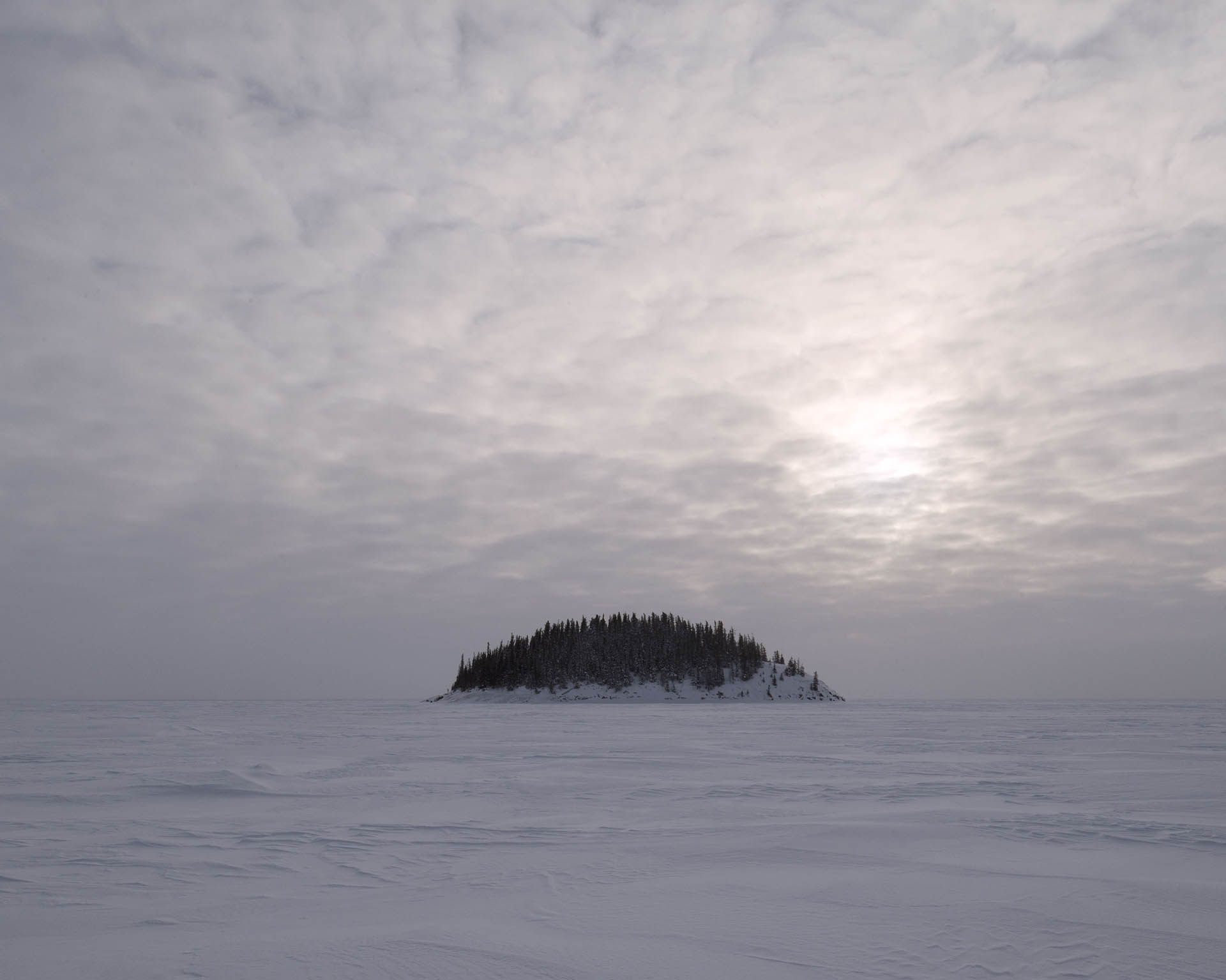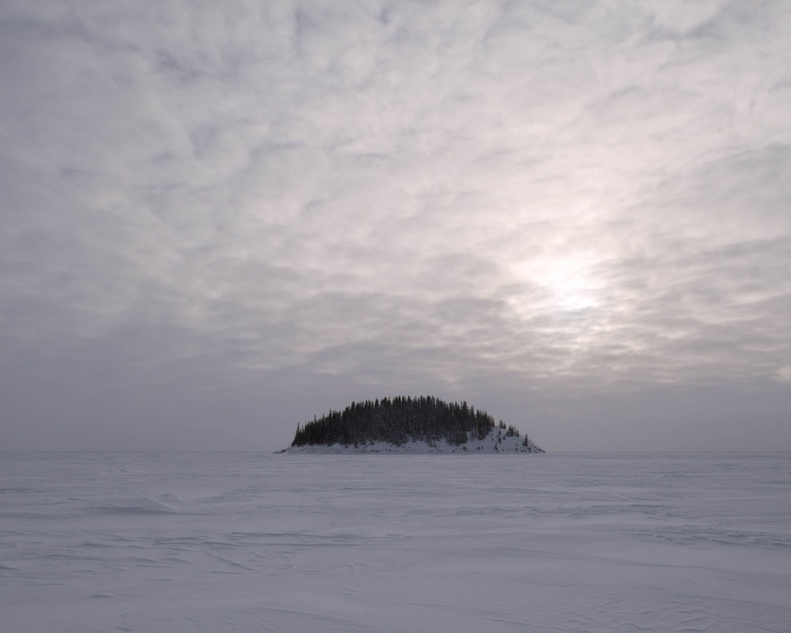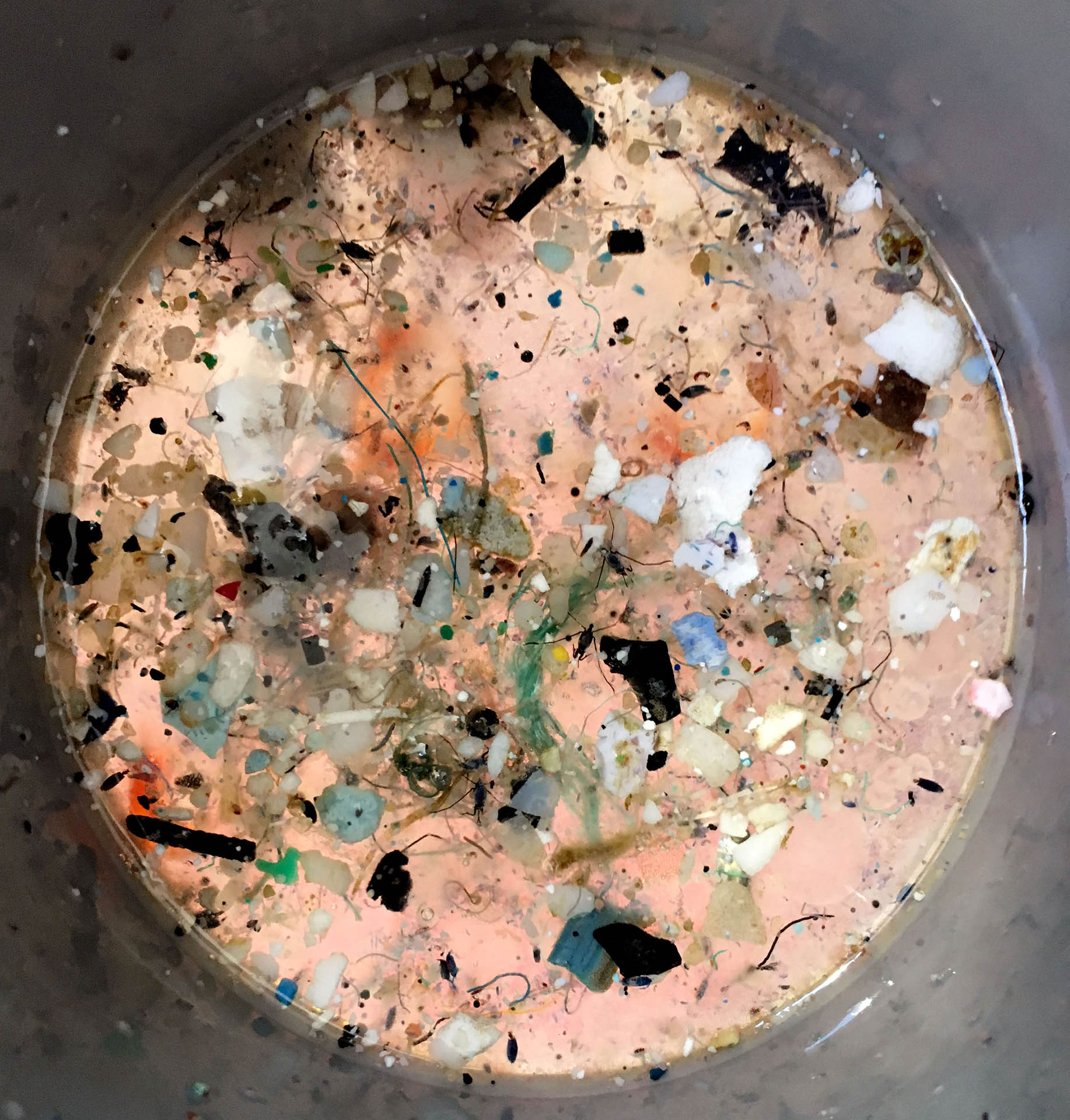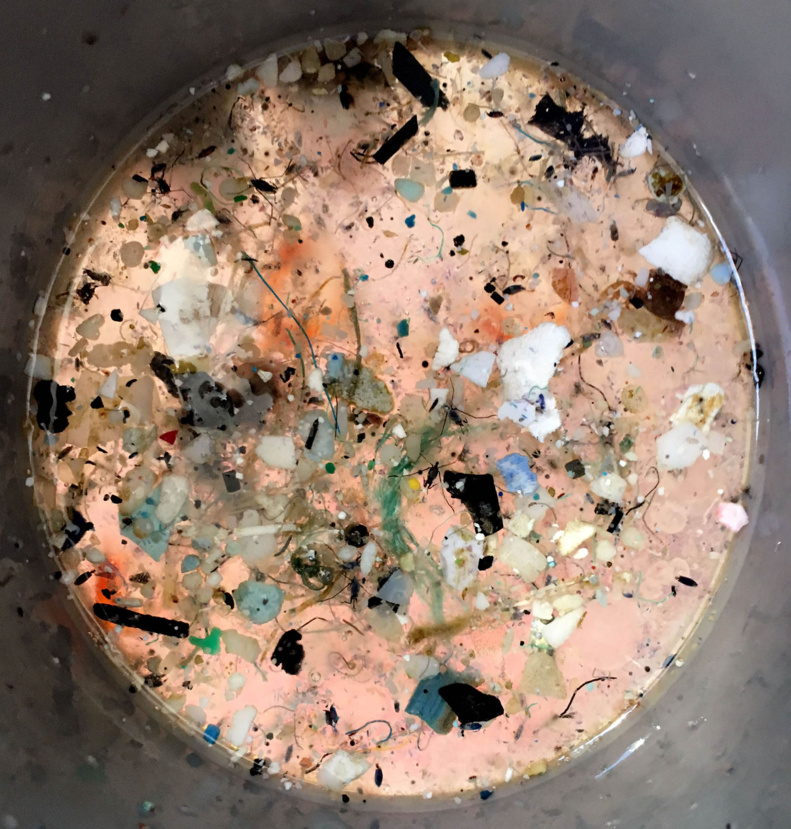This harrowing photo-reportage was produced together with Le Monde and focuses on many aspects of pollution due to industries like drilling for petrol in Alberta, which produces toxic sands. Furthermore nuclear or industrial chemistry plants contribute to the pollution of soil and forests. Due to ignorance and deliberate omission by authorities world-wide, this is unfortunately a process that is irreversible.
Another example is how undisolvable plastic enters into the food chain in the oceans. Fish mistake the microscopic plastic balls for plancton and it enters their digestive system. Many will die instantly, but for others, it continues down the food chain eventually entering the human digestive system: we only have to visualise the image 'Tears of Sirens' to understand what horrors are present in the Pacific Ocean where the biggest concentration of plastic in global oceans is to be found.
Although this may seem to be a highly simplified approach to the intricacies of the photo show, it should awaken the conscience of the viewer to the perils of toxic industrial waste. This is an issue that is unavoidable, beginning with house-hold rubbish placed into separate bins to stop further pollution of our environment.
58 Rue Quincampoix, 75004 Paris
open tuesdays to saturdays from 13.30 to 18.30 until 23 February 2019 for Bollendorf.

















